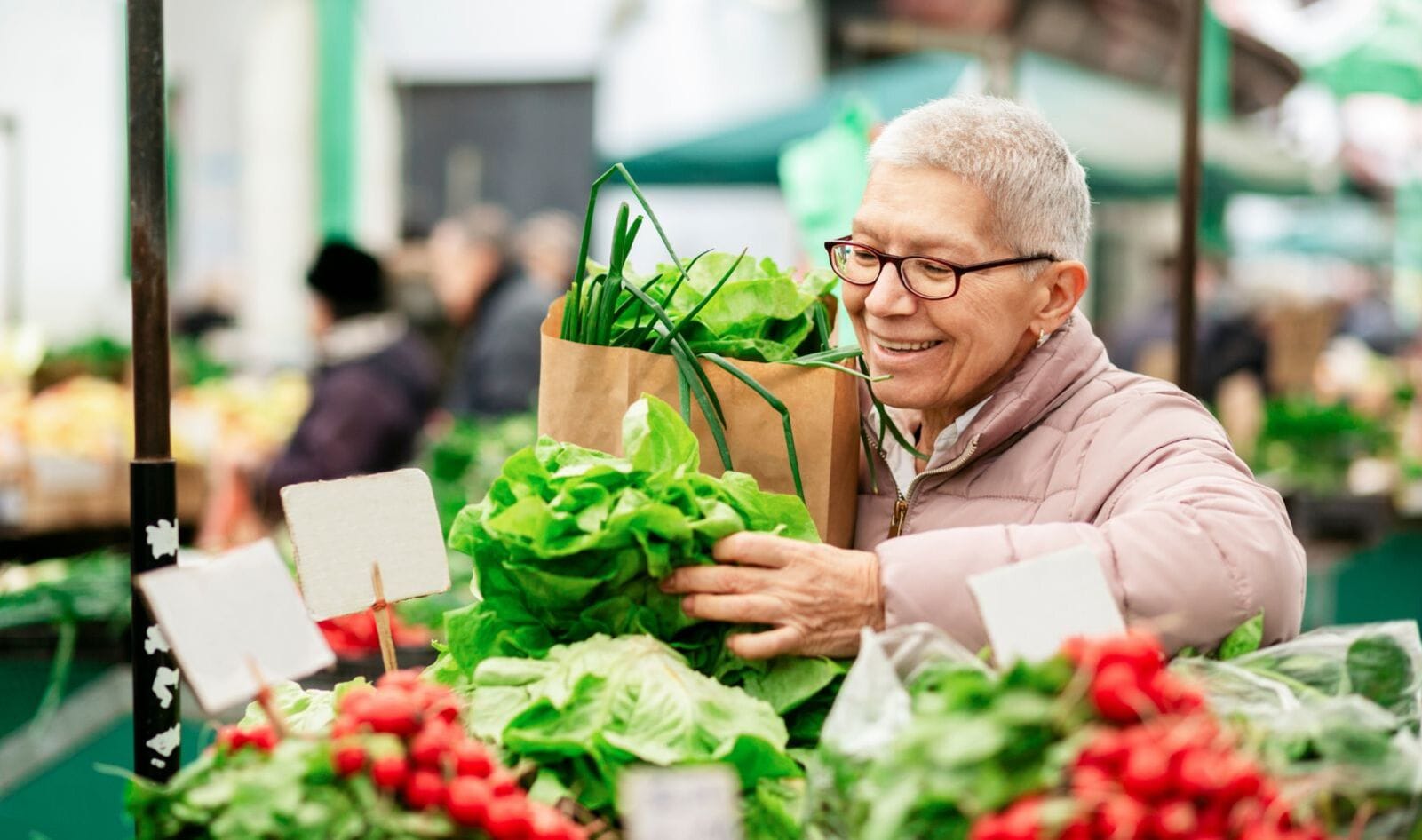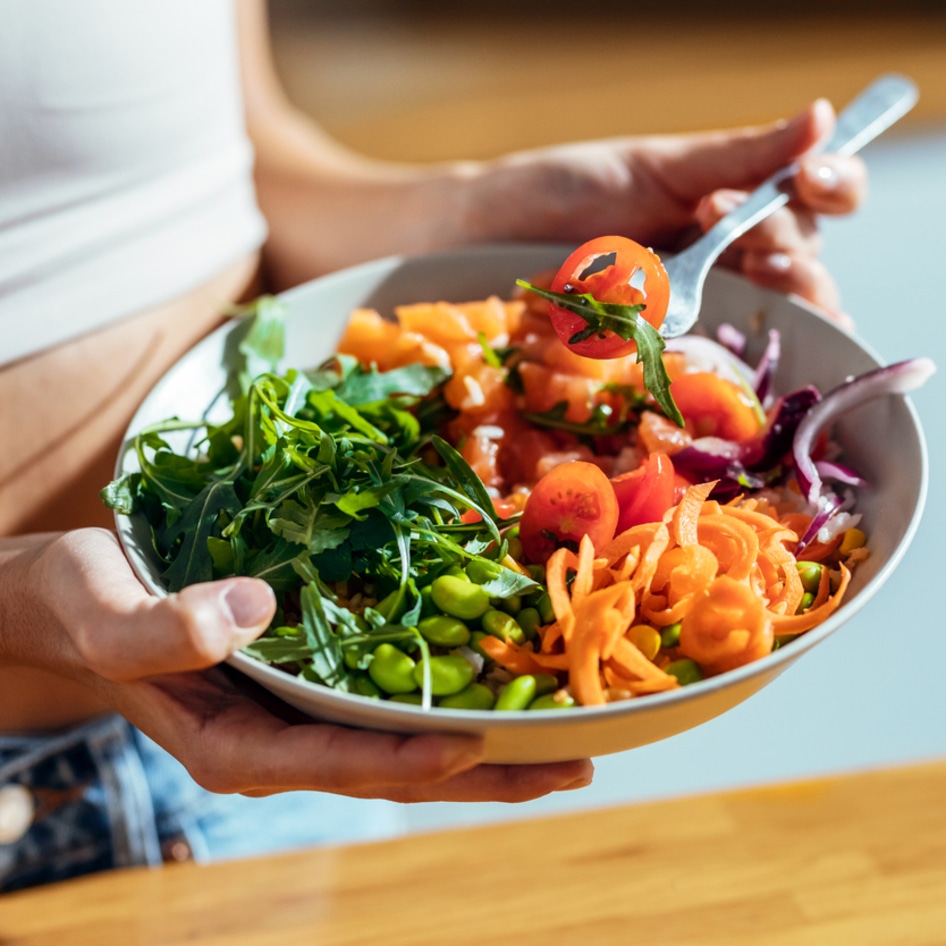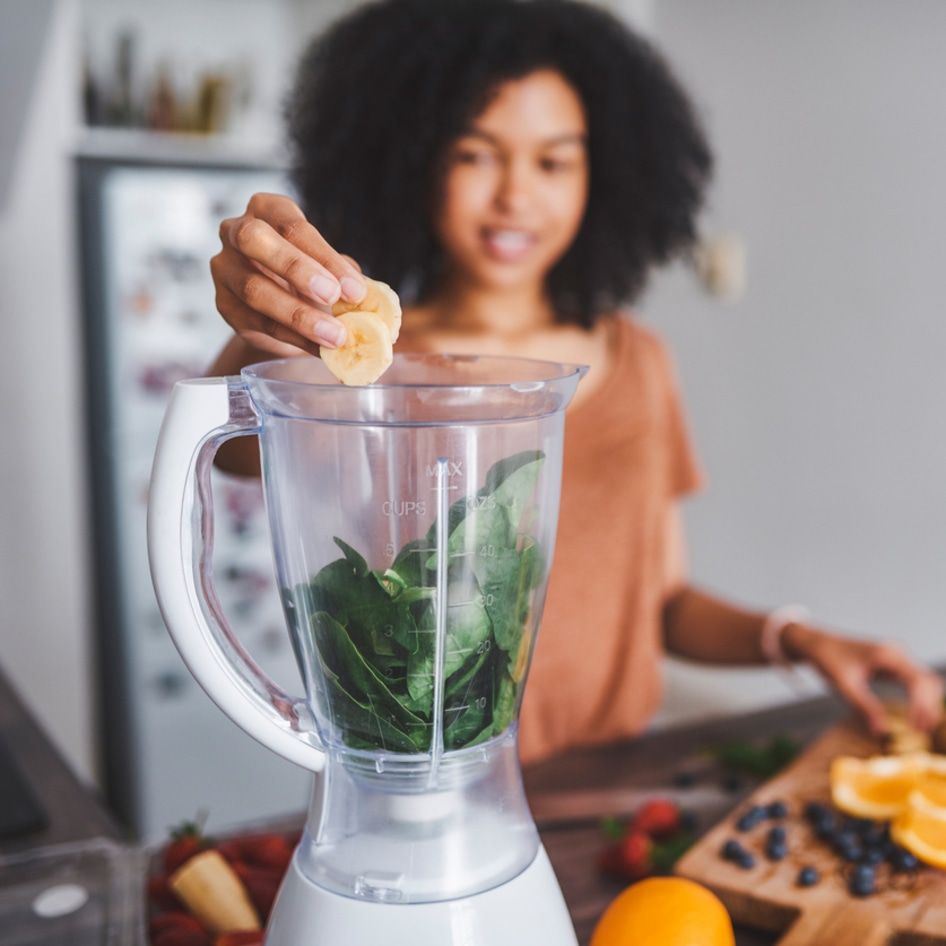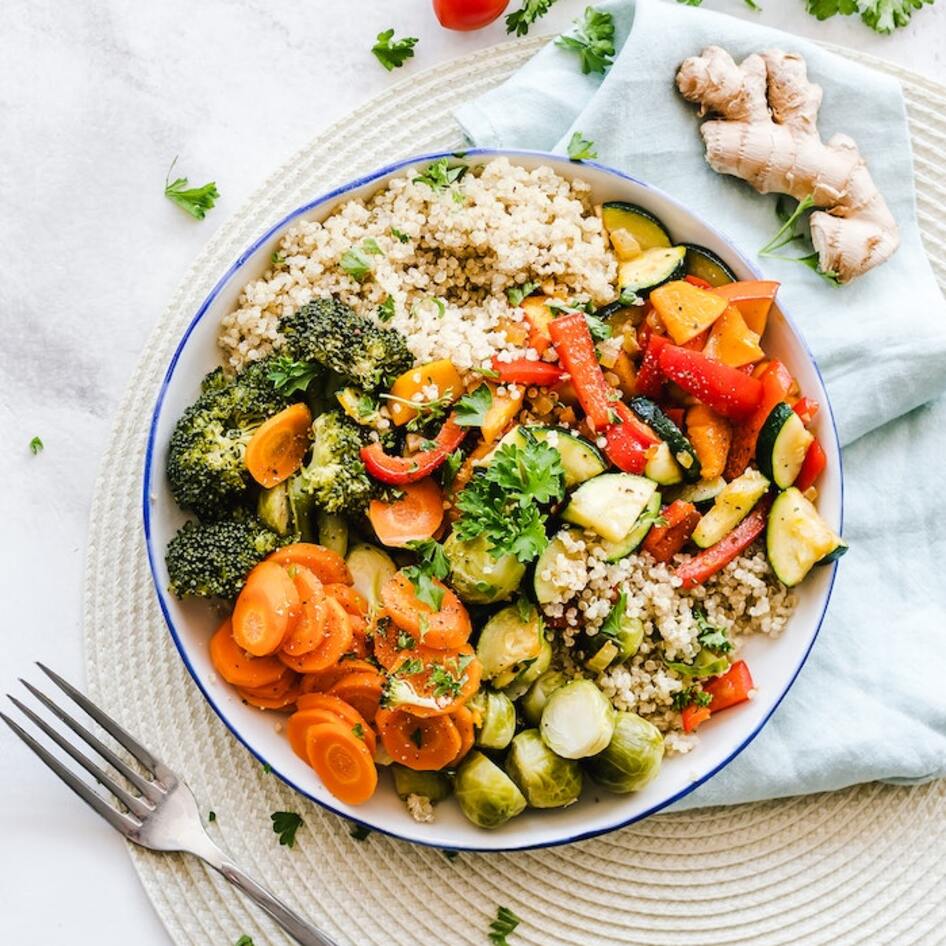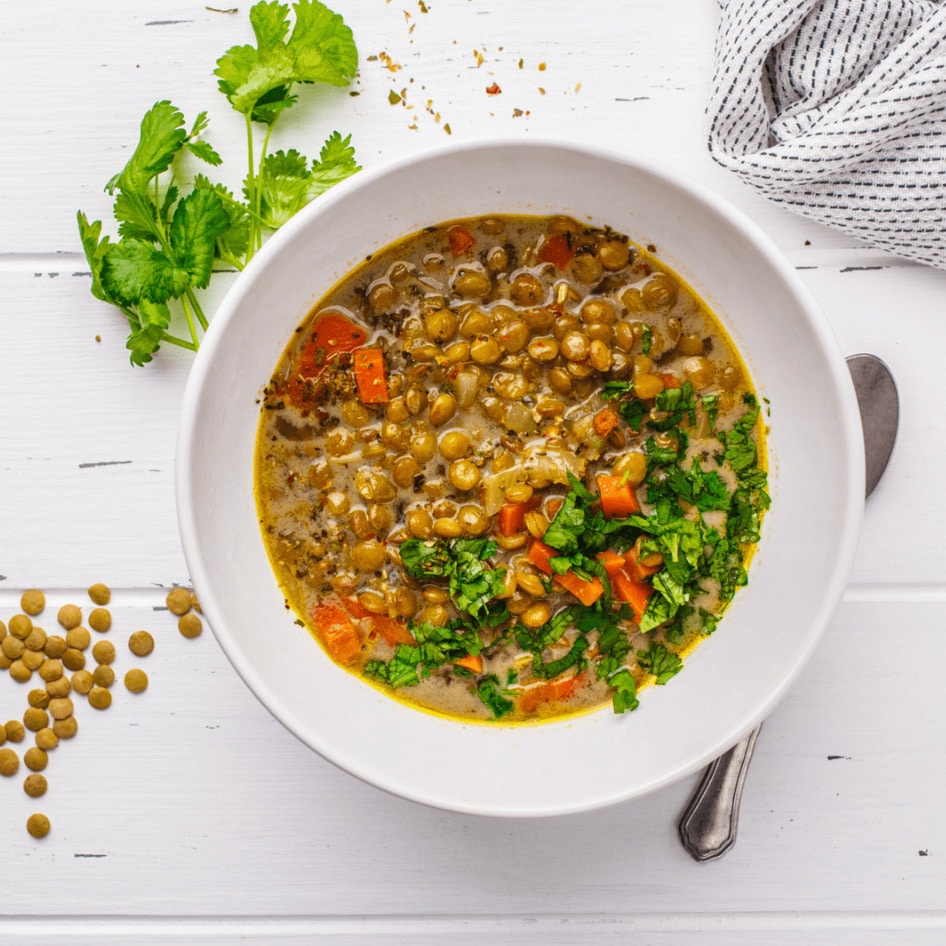When the nights are dark and there’s a chill outside, it can be hard to summon up the motivation to eat healthy foods. In the US, popular comfort dishes include pizza, burgers, French fries, and hot dogs. But, while there’s nothing wrong with treating ourselves, eating fried and processed foods too often can be detrimental to our health. In fact, according to the Centers for Disease Control and Prevention (CDC), only around 10 percent of American adults eat the recommended amounts of fruits and vegetables every day.
For many people, preconceived ideas about cost and convenience can be a barrier to eating healthy foods. However, multiple studies have confirmed that if consumers can access fruits and vegetables (food apartheid is a real issue in the US—read more about that here), choosing produce over other foods can actually save money.
One 2023 study published in Nutrients suggested that a family of four may be able to save $19 a week by adopting a plant-forward Mediterranean diet over a typical Western diet. The research was concentrated in Australia, but studies in the US have come up with similar results. For example, another clinical trial published in the Journal of the American Medical Association in 2024 found that a plant-based diet may actually lower food expenses for overweight adults.
“We knew that a vegan diet significantly reduces your risk of conditions like heart disease, diabetes, and obesity—and now we have proof that opting for beans instead of beef will also lead to significant savings on your grocery bill,” study co-author Hana Kahleova, MD, PhD director of clinical research at the Physicians Committee for Responsible Medicine, said in a statement at the time.
How to eat more vegetables and save money this winter
To help you eat more vegetables for less money this winter, we’ve compiled some of our top saving tips below.
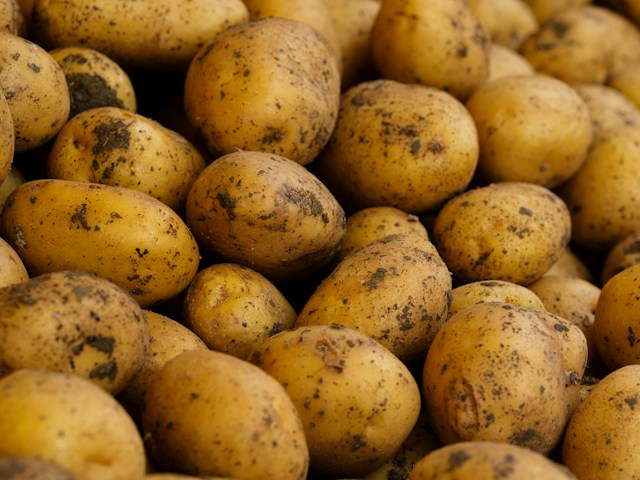 Unsplash
Unsplash
1 Eat with the seasons
Even in winter, seasonal produce tends to be more abundant and less expensive. Winter vegetables include root vegetables (like carrots, potatoes, and beets), winter squash, Brussels sprouts, kale, and cabbage. “Overall, incorporating seasonal produce into your diet brings a wealth of benefits for your health, taste buds, the environment, and local communities,” Danielle Smith, RD, told Reader’s Digest. “It’s a win-win situation that encourages a well-rounded, sustainable approach to eating.”
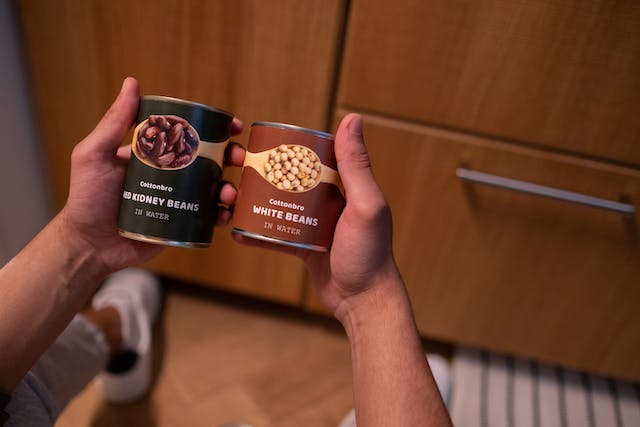 Pexels
Pexels
2 Opt for canned and frozen options over fresh
When it comes to inexpensive vegetables, canned and frozen options are usually your best bet. Not only are they cheaper at the point of sale, but they also last much longer, too, which means you don’t have to waste money (and food) by throwing produce away when it’s spoiled in the fridge. And don’t worry, frozen vegetables can be just as nutritious, as they are typically frozen at their peak freshness. Canned vegetables are also a healthy option (and they can last for years on the shelf), but just be mindful of added salt.
BECOME A VEGNEWS VIP: Get exclusive product deals, freebies, and perks galore!
 Pexels
Pexels
3 Use the whole vegetable or fruit
One way to reduce food waste and get the most out of your dollar is by using every part of the vegetable. For example, you can use vegetable peels to make broth or save the skin of your potatoes to load up with vegan cheese the next day. “Steam and blend broccoli stems into a creamy soup, stir-fry cauliflower leaves with a medley of vegetables and tofu, and turn virtually any produce scrap into an umami bomb broth,” vegan chef Max La Manna wrote for VegNews. “Carrot tops, celery ends, and even the cores of apples and pears can be boiled with water to create a seriously flavorful base worthy of a Michelin star.”
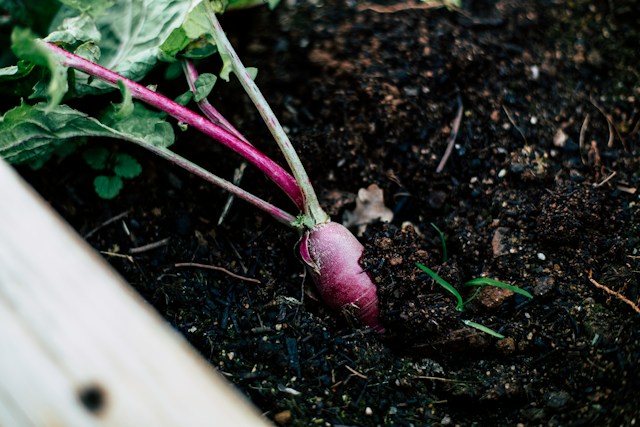 Unsplash
Unsplash
4 Grow your produce
If possible, cut down those grocery store trips by growing some of your own vegetables at home—it’s also a great way to stay in touch with nature during the colder months. Some cold-hardy varieties can be grown in containers or small indoor spaces with proper light. For tips on cold weather growing, check out useful books like The Winter Harvest Handbook, and Backyard Winter Gardening.
 Pexels
Pexels
5 Batch cook hearty vegetable-rich recipes
Batch cooking is another great strategy for both saving money and ensuring you have convenient access to nutritious meals all the time. Plan your batch-cooked meals to include a variety of vegetables, which will help ensure you get a range of nutrients in your diet throughout the winter. After you’ve whipped up a hearty casserole or stew (or anything else you fancy), just pop it in the freezer for reheating at a later date. Find 12 easy recipes ideal for batch cooking here.
For more plant-based stories like this, read:
JUMP TO ... Latest News | Recipes | Guides | Health | Subscribe
Here at VegNews, we live and breathe the plant-based lifestyle, and only recommend products we feel make our lives amazing. Occasionally, articles may include shopping links where we might earn a small commission, but in no way does this effect the editorial integrity of VegNews.

